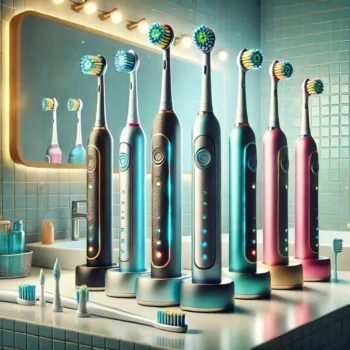TL;DR
- The Crisis: 62 million tonnes of e-waste generated in 2022, only 22.3% properly recycled, wasting $91 billion in valuable materials
- Why It Matters: Electronics contain toxic substances (mercury, lead, cadmium) that poison communities and environments when improperly disposed
- Before Recycling: Extend device life through maintenance, repairs, and resisting unnecessary upgrades
- Data Security First: Use factory resets, specialized wiping software, and remove storage devices before recycling
- Find Certified Recyclers: Look for e-Stewards or R2 certifications; use manufacturer take-back programs from Apple, Dell, Samsung, etc.
Global E-Waste Crisis: Understanding the Scale

Record-Breaking E-Waste Generation
Global e-waste hit a staggering 62 million metric tons in 2022. That’s an 82% surge since 2010. We’re on track to hit 82 million tons by 2030. This isn’t just growth; it’s an uncontrolled surge, solidifying e-waste as the planet’s fastest-growing domestic waste stream by a wide margin.
China produces the most by volume: a massive 12 million tons each year. But the per capita numbers reveal a different, more telling story. Europeans are the biggest individual contributors, discarding 17.6kg per person. They’re followed by Oceania (16.1kg) and the Americas (14.1kg). This disparity highlights a core issue: high consumption economies are driving the crisis.
Economic Value Being Wasted
Raw materials in 2022’s e-waste were valued at $91 billion—more than the GDP of most countries. This treasure trove includes:
- 772 pounds of silver from 1 million recycled phones
- 35,000 pounds of copper from the same volume
- 75 pounds of gold worth hundreds of thousands of dollars
- 33 pounds of palladium used in automotive and electronics industries
Yet most of these materials end up in landfills or informal recycling operations that recover only a fraction of their value. Proper recycling could transform waste streams into profitable material recovery operations.
Why E-Waste Matters: Environmental and Health Impacts

Toxic Materials in Your Gadgets
Tech’s dirty secret is its chemical recipe. We’re not just talking about a bill of materials; this is a silent public health crisis. Older LCD screens leach mercury—a potent neurotoxin that attacks the nervous system. Circuit boards rely on lead-based solder, a metal notorious for causing catastrophic, irreversible damage to developing children’s brains. Then there’s cadmium, which stabilizes batteries before settling, persistently, in human renal tissue. Plastics are loaded with brominated flame retardants (BFRs), compounds that mimic our natural hormones and disrupt the body’s intricate endocrine messaging.
The Human Cost of Improper Disposal
Informal recycling hubs become ground zero. The work is crude, visceral. To retrieve copper, they incinerate wire coatings—spewing carcinogens like dioxins into the air. Gold extraction involves acid baths; the leftover toxic sludge is just dumped, poisoning water tables beneath. The local health impact is immediate and severe. Kids suffer from chronic respiratory illness and demonstrable cognitive decline.
Places like Agbogbloshie and Guiyu are the famous cases, but the problem is pervasive. Countless smaller sites operate worldwide. The public health data reveals a horrifyingly consistent pattern: specific cancer clusters, skyrocketing neonatal abnormalities, and drastically reduced life spans are directly linked to these locations. This isn’t a random scattering of tragedies. It’s the system’s predictable, and accepted, outcome.
How to Responsibly Recycle Your Electronics: A Step-by-Step Guide

Before Recycling: Extend Your Device’s Life
Smart consumption beats recycling every time. Simple maintenance can double device lifespans:
- Clean devices regularly to prevent overheating
- Use protective cases to prevent physical damage
- Update software to maintain security and performance
- Replace batteries instead of entire devices when possible
- Resist unnecessary upgrades driven by marketing rather than need
When devices truly reach end-of-life, consider repair or refurbishment before recycling. Many issues that seem terminal—cracked screens, dead batteries, software problems—can be fixed affordably.
Step 1: Data Security First
Data protection should be your top priority when recycling electronics. Simply deleting files doesn’t remove them permanently—specialized software can recover “deleted” data from storage devices.
For smartphones and tablets:
- Perform factory resets through device settings
- Remove SIM cards and memory cards
- Sign out of all accounts (Apple ID, Google, Microsoft)
- Use encryption before wiping if available
For computers:
- Back up important data to external storage
- Use specialized wiping software (DBAN, Eraser, or manufacturer tools)
- Remove hard drives for separate destruction if handling sensitive data
- Consider professional data destruction services for business devices
For all devices:
- Document serial numbers before recycling
- Remove any personal accessories or attachments
Step 2: Finding Certified Recyclers
Not all recycling operations are created equal. Certified recyclers follow strict environmental and security standards, ensuring your devices get processed responsibly.
Look for these certifications:
- e-Stewards: Highest environmental and social standards
- R2 (Responsible Recycling): Focuses on data security and environmental protection
- ISO 14001: International environmental management standards
Where to find certified recyclers:
- Manufacturer take-back programs (Apple, Dell, HP, Samsung)
- Major retailers (Best Buy, Staples, Office Depot)
- Municipal collection events
- Certified recycler directories online
Red flags to avoid:
- Operations that pay cash for devices (often ship to developing countries)
- Recyclers without proper certifications
- Companies that won’t provide data destruction certificates
- Facilities that don’t allow site visits
Step 3: Preparation and Drop-off
Proper preparation ensures smooth recycling and maximum material recovery:
Physical preparation:
- Remove batteries when possible (many recyclers prefer separate battery handling)
- Separate devices by type (phones, computers, cables, etc.)
- Keep original packaging if available
- Remove any non-electronic components
Documentation:
- Obtain receipts for tax deduction purposes (many recyclers are nonprofits)
- Get data destruction certificates for business devices
- Keep records of recycled items for warranty or insurance purposes
Transportation:
- Use original packaging or padded containers to prevent damage
- Separate lithium batteries to prevent fire hazards
- Check recycler requirements for specific preparation steps
Step 4: What Happens After Recycling?
Understanding the recycling process helps you make informed choices about where to send your devices.
Initial processing:
- Devices get sorted by type and condition
- Working devices may be refurbished for resale
- Non-functional items proceed to material recovery
Disassembly:
- Manual removal of hazardous components (batteries, mercury switches)
- Separation of different material types (metals, plastics, glass)
- Recovery of valuable components for reuse
Material recovery:
- Shredding of remaining components
- Magnetic separation of ferrous metals
- Density separation for different metal types
- Chemical processing for precious metal recovery
Final products:
- Recovered metals sold to manufacturers
- Plastics processed into new products
- Hazardous materials sent to specialized treatment facilities
Moving Past Basic Recycling: A Deeper Look at the Circular Economy
The Fix-It Culture: Grassroots and Commercial
Community repair cafes and fix-it clinics are popping up everywhere. They’re not just about saving a single gadget; they’re hands-on workshops that fight the knee-jerk impulse to replace. This builds practical, often overlooked skills while diverting millions of devices from landfills.
On the commercial side, professional refurbishment is a legit economic force. It creates strong secondary markets for electronics. A refurbished laptop or phone often performs identically to a new one but at a fraction of the cost—typically 30-50% less. This isn’t just recycling; it’s a critical market-based solution for tech accessibility.
Manufacturer Take-Back: Beyond Compliance
Some major brands are going further than mandated take-back laws. Apple’s program, for instance, accepts any device in any condition. It provides a credit for functional units and responsibly recycles the rest for free. This captures materials that would otherwise be lost.
Dell’s closed-loop system integrates recycled plastics from old hardware into new computers. This is genuine circular design in action. Meanwhile, HP’s cartridge program has hauled in over 4.5 billion units since 2000. The scale is massive, though the environmental benefit hinges on how many of those materials are actually reused in new products rather than just downcycled.
Right to Repair: Legal and Design Shifts
Right-to-repair laws are finally gaining global traction. Their core demand is simple: force manufacturers to supply repair manuals, spare parts, and diagnostic tools. This legal push directly challenges planned obsolescence by making independent repair a viable, affordable option.
FAQ: E-Waste Unplugged
What actually counts as e-waste?
Most people picture a dead phone or an old laptop. That’s just the start. E-waste is a much broader category, defined by function, not form. The real litmus test is simple: any discarded item with electronic components qualifies. That forgotten smart thermostat? E-waste. The electric toothbrush you finally upgraded? Also e-waste. If it plugs in, lights up, or connects, it requires specialized disposal. It’s anything electronic, destined for the bin.
Why is trashing electronics so bad?
Junking electronics is a two-fold failure, both environmentally catastrophic. One, they harbor a toxic payload. Landfills aren’t sealed tombs; rainfall slowly brews a chemical leachate from heavy metals like lead and mercury, which then invades surrounding soil and groundwater. Two, it’s just stupidly wasteful. That device is an urban mine, packed with gold, silver, copper, and critical rare earth elements.
How do I make sure my personal data is truly gone?
Thinking a simple delete clears your data is a major misstep. The information remains on the drive, easily recoverable with basic software. For real security, you need a dedicated wiping program. This tool scrambles the drive’s entire surface not once, but multiple times, following rigorous algorithms like the DoD 5220.22-M standard.
Are big-brand take-back programs legit?
Generally, yes. Major brands like Apple and Dell operate reputable programs. Their trustworthiness, however, is not based on brand name alone. It depends entirely on third-party certifications. Look for e-Stewards or R2 certifications; these mean an independent auditor has verified their entire recycling process. Do not simply trust their marketing. Verify their certifications online yourself. Scrutinize the program’s terms to confirm their policies on data destruction and recycling. Avoid any program that is vague about its downstream partners—transparency is non-negotiable.





